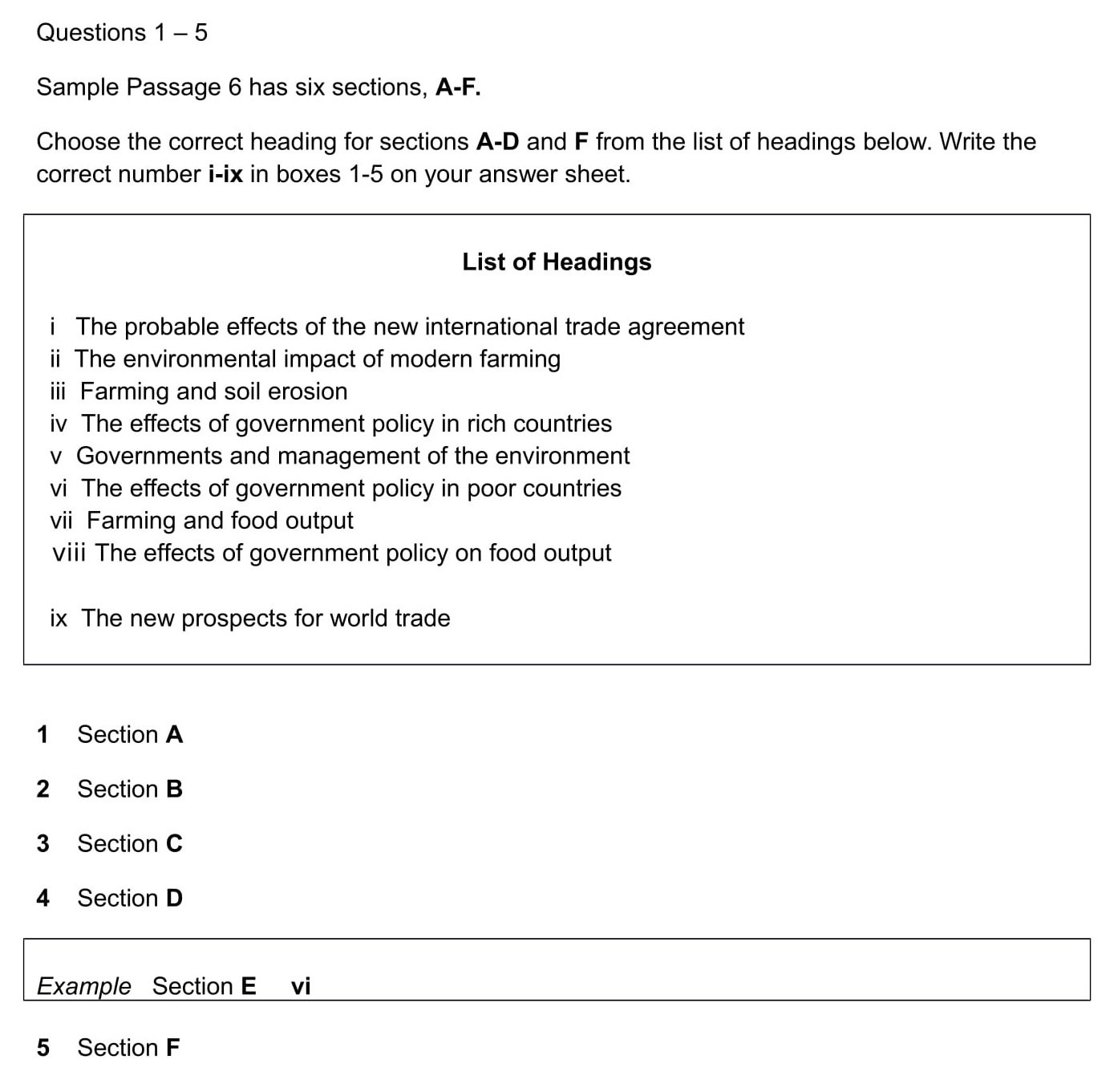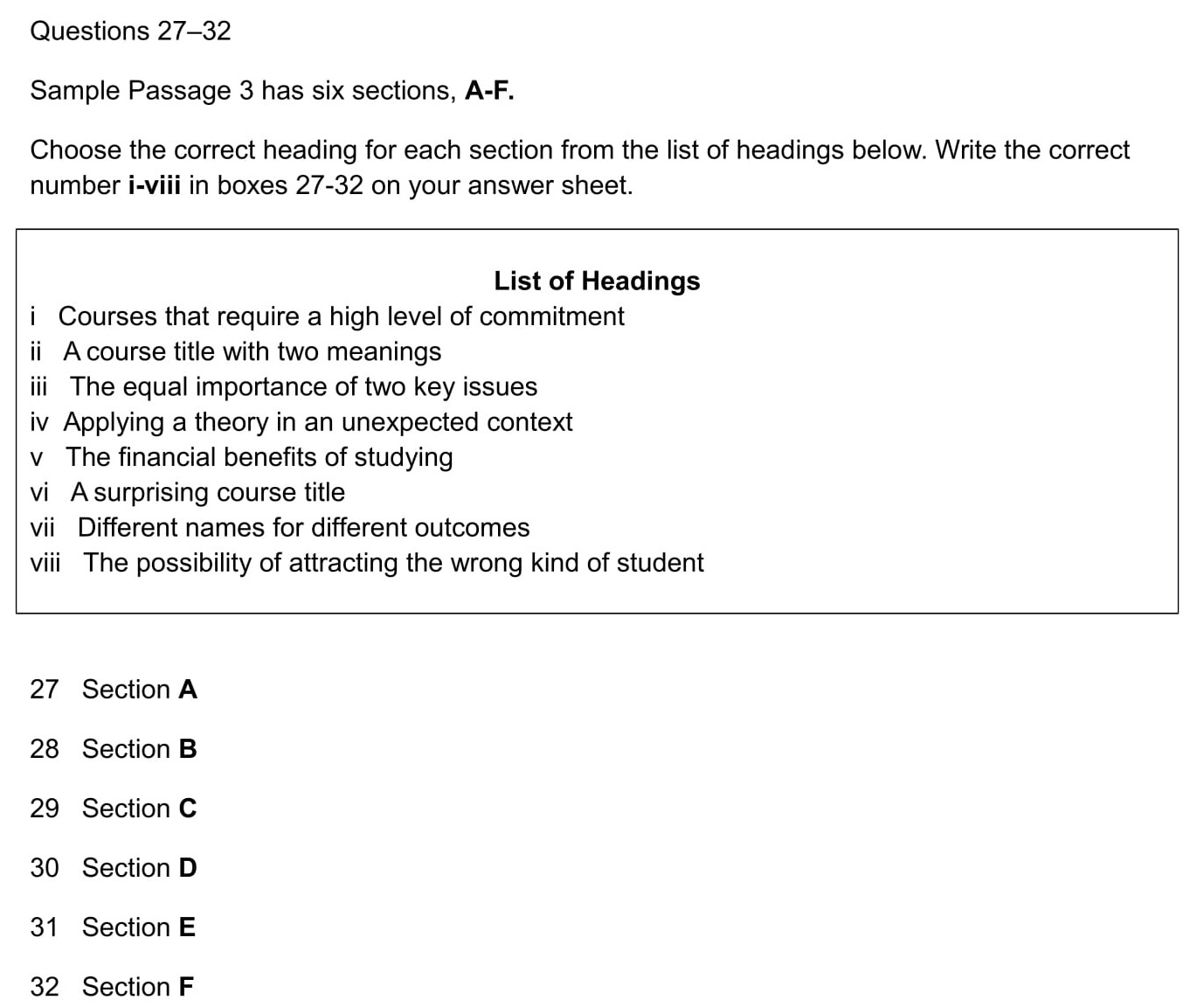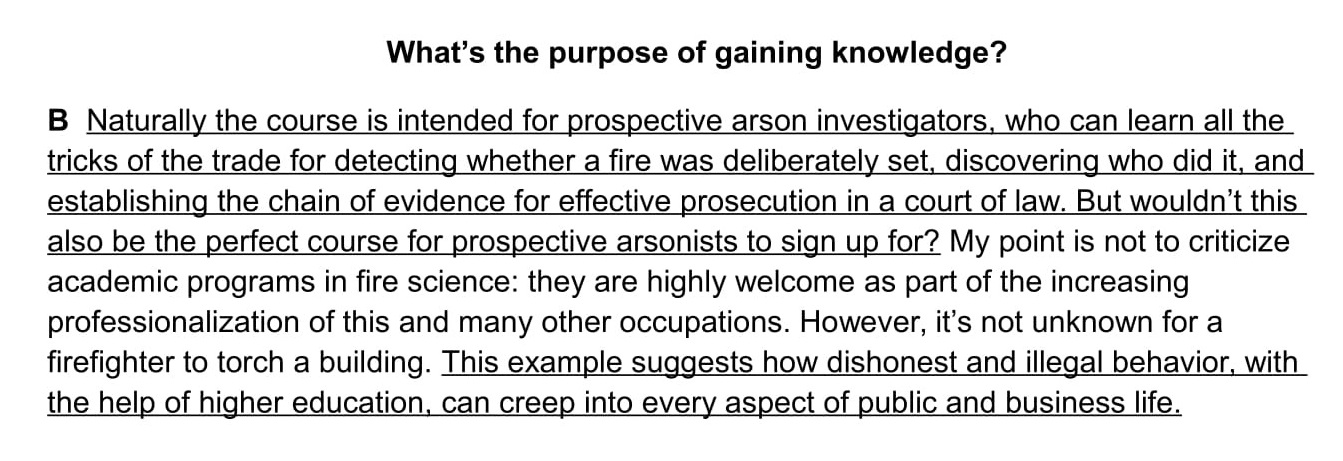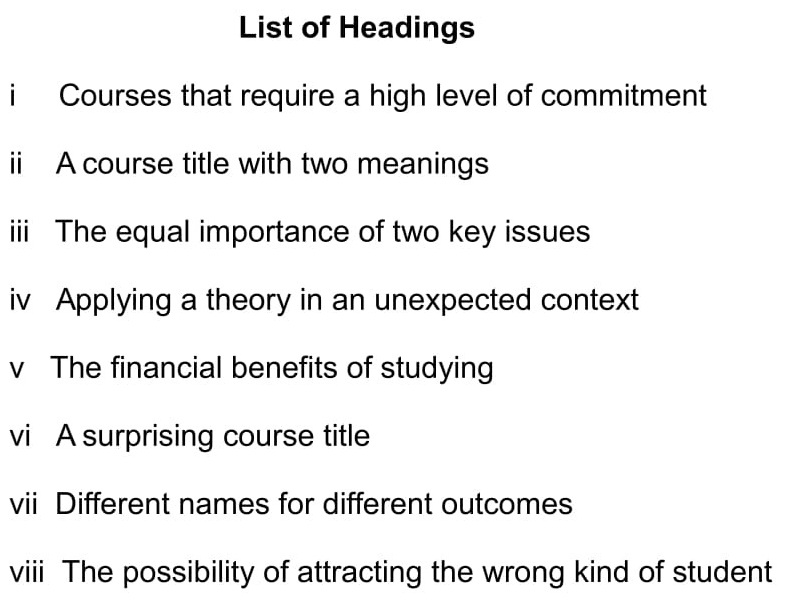IELTS Reading
Matching Headings Questions
On this page, we’re going to look at ‘matching headings’ questions. They can be some of the most challenging of the IELTS Reading test.
The aim of this type of question is,
to test if you are able to understand the main idea of each paragraph.
There are two possible strategies for answering matching heading questions:
1) Read text first, then headings.
2) Read headings first, then text.
Some teachers will tell you to always read the text before you look at the headings while others say you should definitely read the headings first.
Personally, I think the first strategy is the easiest. However, my advice is to try both when you’re practicing to see which one works best for you. Different people process information in different ways so one method may suit you better than the other.
Either way, if a matching headings question does come up for one of the texts in your test, do it first. By doing so, you’ll already understand the main ideas of the text by the time you get to the other questions. This will save you a lot of time.
Before we look at the two strategies in detail, I want to quickly highlight the main problems students encounter with these types of questions and also give you some key tips.
Key problems:
- There are more headings than paragraphs – this makes it harder to narrow down the correct ones.
- Some headings will be very similar in meaning.
- It’s easy to confuse specific details in a paragraph with the main idea – they may be different.
- Synonyms and paraphrasing will often be used.
- It’s easy to spend too much time on this type of question.
Key tips:
- Cross out each heading in the test booklet as you match it to a paragraph. This will eliminate it from further consideration as you move onto other paragraphs.
- Work through the paragraphs in order but move on if you’re struggling to find the heading match. Come back to it once you've eliminated more headings and have fewer to choose between.
So, let’s look at the two strategies in detail.
Strategy
1 – Read Text First, Then Headings
Follow these steps.
1) Read the instructions
It’s vital that you understand what you have to do. Here’s an example of how the instructions will be set out. It’s taken from a real IELTS Reading paper.
In the middle of the instructions are the headings but remember, for this first strategy don’t read them yet.
There will sometimes be a sample answer for illustration. In this case, it’s the answer to Section E. Knowing this answer means that you can immediately cross out ‘heading vi’ in the list of headings and eliminate it from further consideration.

Source: Official IELTS website – www.ielts.org
2)
Read the first paragraph
Your aim is to identify the main idea. Focus on the first one or two sentences and the last sentence as these will usually introduce and summarise this main idea. Skim read the rest of the text. You do not need to know the detail for this type of question.
Note that occasionally a section will contain more than one paragraph. In this case, you’ll need to find the main idea in each paragraph.
3) Summarise the main idea
Briefly sum up the main idea of the paragraph in your own words as if you were writing your own heading. Do it in just a few words or a short phrase at the most. Write this beside it.
4) Read the headings
Now it’s time to read the list of headings. As you do so, try to match your summary of the first paragraph to one of the headings. Make sure that you read them all carefully and don’t just select the first one that seems to match as there may be two that are very similar in meaning.
Look out for key words as clues but also synonyms as these are very likely to be used.
Let’s practice the steps so far.
Here’s the first Section (paragraph) of our sample text. If you haven’t already read the instructions, scroll back up and do so, but don’t read the headings yet.
Then work through steps 2-4 and see if you can identify the correct heading. I’ve underlined the first and last sentences to highlight them for you.

Source: Official IELTS website – www.ielts.org
This heading is quite easy to match as the main idea is made clear in the very first sentence, often called the topic sentence.
The answer is:
v. Governments and management of the environment
Did you get it right?
If you didn’t, go back and study the paragraph again and see if you can work out why it is the correct match.
5) Repeat for all sections
Repeat these steps for each section of the text.
If you get stuck on a particular paragraph, move on and come back to it when you’ve matched more heading and crossed them off the list. It will be easier to find the one you’re struggling with when there are fewer headings to choose from
6) Similar headings
Where you have two very similar headings and can’t decide which is the right one, write them out one under the other to help you focus in on the difference between them.
7) Eliminate used headings
Once you have matched a heading, cross through it in pencil to eliminate it from further consideration.
Strategy
2 – Read Headings First, Then Text
Follow these steps.
1) Read the headings
First, read the full instructions, including the headings, then focus in on the headings.
Read each carefully and try to understand what it means. Remember, each will summarise the main idea of the paragraph it matches.
Also remember that there will be more headings than paragraphs so you won’t need them all.
2) Underline key words
If a heading contains names, numbers, dates or place names,
underline these to identify them as key words that should be easy to spot in
the text. Or there may be a key noun that stands out. It could be one that
occurs in more than one heading.
Doing this will help you to match information in the text and headings as you read each paragraph.
Here’s are the instructions of our sample text for Strategy 2. Again, it’s taken from a real IELTS Reading paper.
Have a go at these first two steps.

3) Identify similar titles
There will often be two headings with a similar meaning which can make it difficult to decide which one is the correct match.
If you do spot two similar headings, make a note of this. It will remind you to look at them both closely when you think one of them is the match.
4) Read the first paragraph
Your aim is to identify the main idea. Focus on the first one or two sentences and the last sentence as these will probably introduce and summarise this main idea. Skim read the rest of the text. You do not need to know the detail for this type of question.
Look out for any keywords you underlined in the heading. Be aware that synonyms could be used instead.
Note that occasionally a section will contain more than one paragraph. In this case, you’ll need to find the main idea in each paragraph.
5) Choose the matching heading
Now that you understand the main idea of the first paragraph, go back to the headings and select the best match. Where you have two possible headings, write them out one under the other to help you focus in on the difference between them.
Once you have made your decision and filled in your answer, cross through the heading in pencil to eliminate it from further consideration.
6) Move on
As I mentioned in the tips above, if you’re struggling to find the correct heading, move on and come back to it once you’ve eliminated more headings and have fewer to choose between.
7) Repeat for all sections
Repeat these steps for each section
of the text.
Now have a practice with one of the paragraphs (Section B) from the sample test paper. I’ve added the headings again beneath to make it easier.
I suggest that you focus on the first two sentences and the last one (I’ve underlined them), then skim read the rest of the paragraph.


Source: Cambridge English – IELTS 12 Academic
The correct answer is,
viii The possibility of attracting the wrong kind of student
If you didn’t get this, go back and study the paragraph again and see if you can work out why it is the correct match.
The more you practice matching headings questions, the easier they will get. Choose the strategy that you find works best for you and stick to it.
Want to watch the video of this page? Click here.
Like this page?
Lessons On All Question Types
For more sample questions with step-by-step instructions, see the IELTS Reading menu page.
More Reading Test Pages
IELTS Reading Test – Understand the format, question types & marking system & know what skills are assessed. Also learn success strategies, key reading skills & discover top tips.
IELTS Reading Skills – Master the skills of skimming, scanning & detailed reading. Understand the importance of topic sentences & how to use context for meaning & unfamiliar words.
Top 7 IELTS Reading Tips – Each tip will take you a step closer to the high score you want. They are the key to top marks in your test.
9 More Tips For IELTS Reading – Learn valuable practice techniques & discover a secret that may gain you extra marks.
IELTS Reading Practice – Discover the top 5 things you must do to prepare for your reading test.
How to Complete the IELTS Reading Test in 60 Minutes – Top 6 Recommendations.
IELTS Academic Reading – Why you should take IELTS Academic Reading, test format, text types &
sample tests.
IELTS General Reading – Why you should take IELTS General Reading, test format, text types & sample tests.
Reading Practice Samples – Short activities to improve your reading skills & help you learn topic vocabulary.









